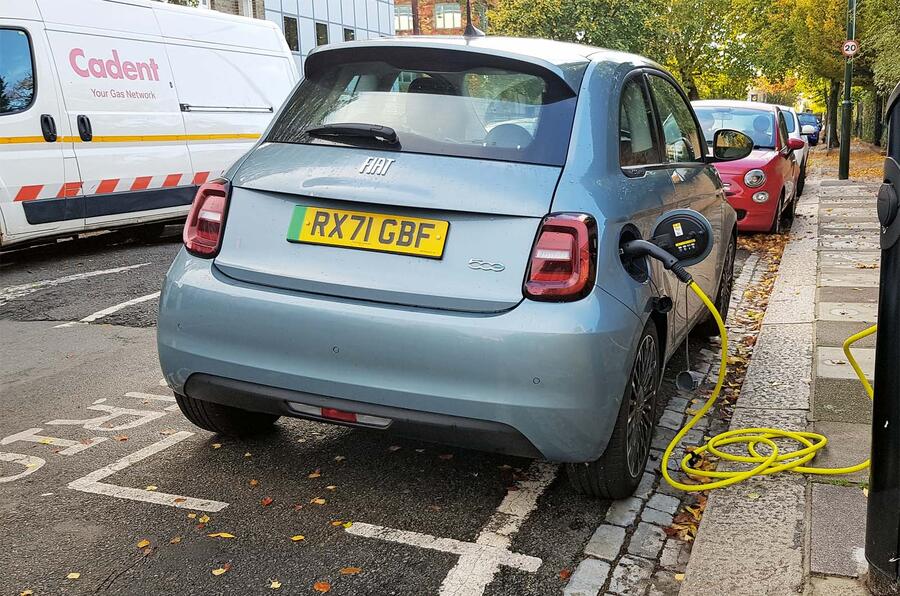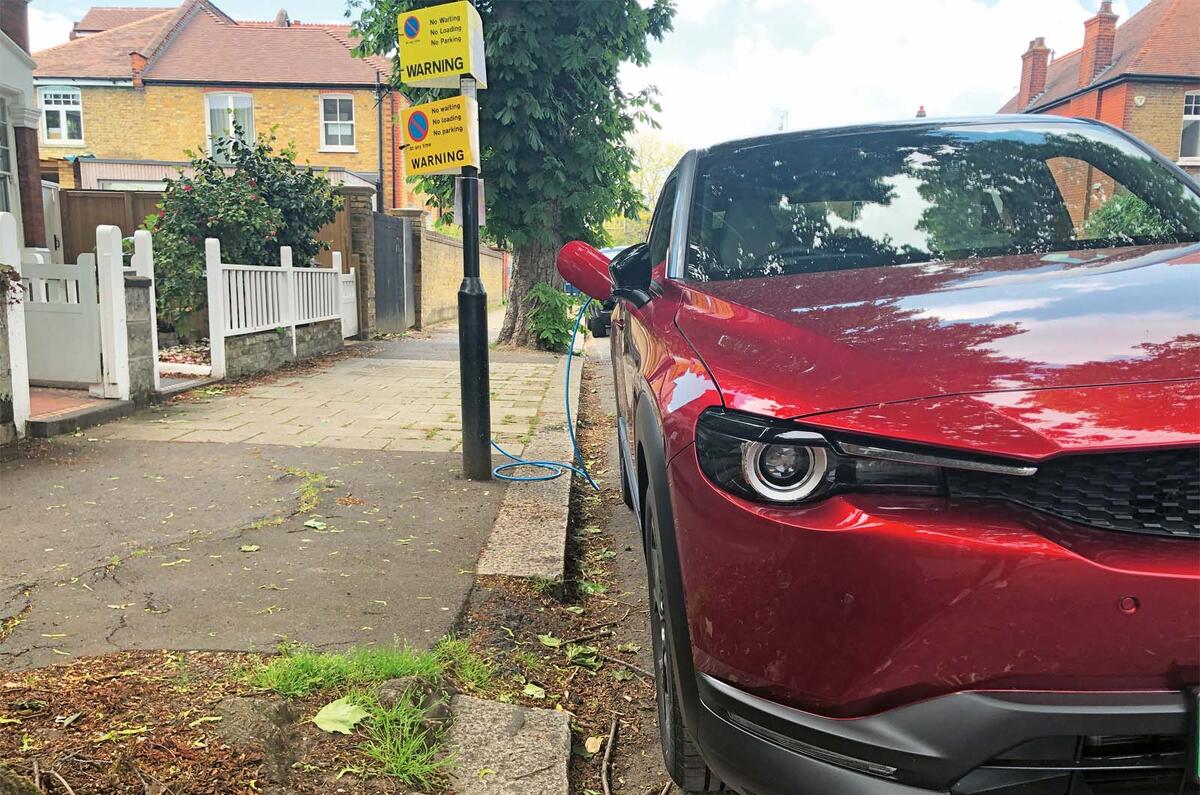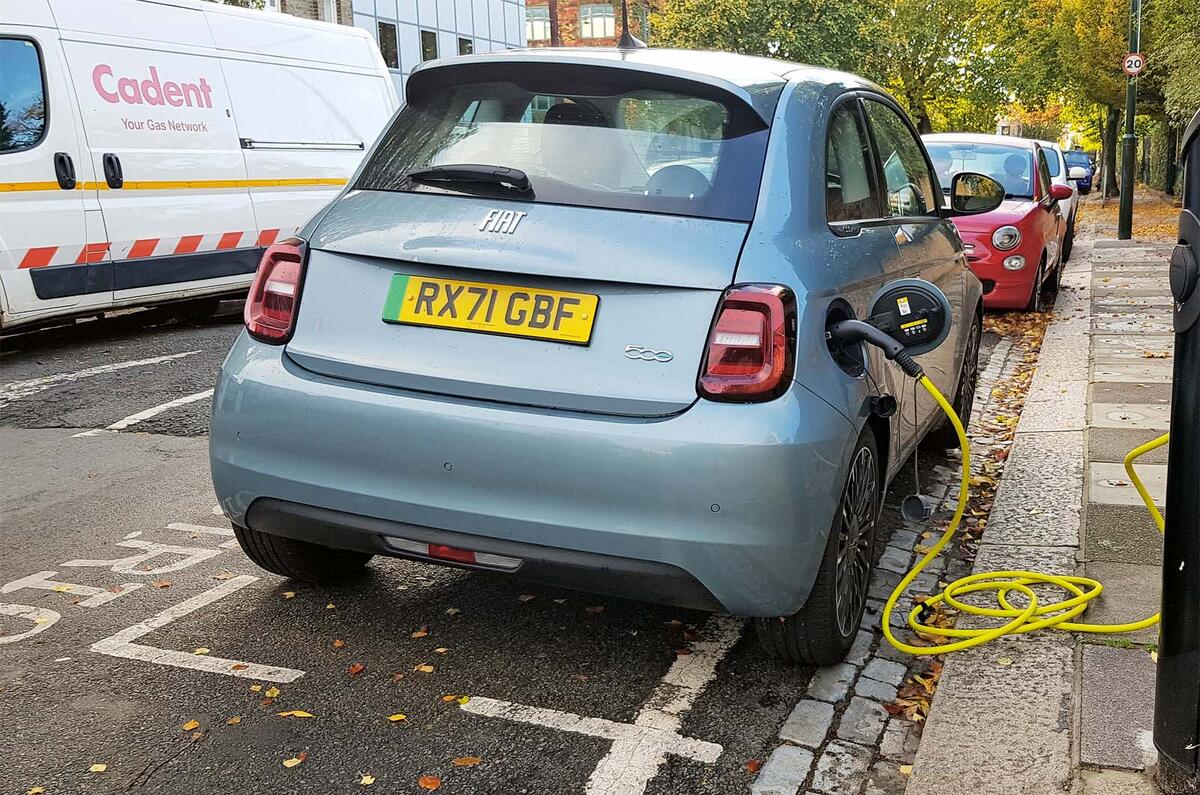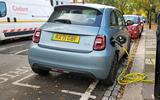With more than 40% of UK homes lacking a driveway, lamp-post chargers are billed as the solution for drivers to refuel their EVs locally. However, could reports of failing chargers and ICE car drivers being angry at losing parking bays undermine public support for them?
In July, west London’s Hounslow Council cut off the power to a number of lamp-post chargers in Chiswick after residents reported that they had stopped working.
Following an inspection, the council concluded that heavy rainfall had entered the chargers, causing them and the street lamps to which they were connected to fail.
The council has since restored power to the lamps while Ubitricity, the Shell-owned charger provider that installed the chargers, carries out repairs.
In April, residents in the same borough protested about the creation of lamp-post charging bays because they resulted in the loss of eight parking spaces for ICE cars on a street that had few EVs. The council promised to respond but didn’t reply to Autocar’s request for comment.
These aren’t the first instances of lamp-post chargers attracting negative publicity. In November last year, Portsmouth City Council disconnected 98 lamp-post and bollard-mounted chargers due to safety concerns.
The council said it had instructed provider Ubitricity to resolve the issue “as soon as possible”. However, seven months later, only 41 of those chargers had gone back online.
A spokesperson for the council said: “We hope to have restored power to the remaining chargers by the end of August.”
An Ubitricity spokesperson, commenting on the problems in both areas, said: “We are working closely with the local authorities to restore service to these areas.”
The UK has around 20,000 lamp-post chargers. They offer charging speeds of around 5kW and are provided by operators such as market leader Ubitricity and Char.gy, which installed London’s first such charger in 2018.

To finance more, councils can apply for a share of the UK government’s £350 million Local Electric Vehicle Infrastructure (Levi) Fund.
“Levi is a game-changer,” said Joe Michaels, CEO of Joju, a public charger installation and maintenance company. “The government is keen to increase the number of public chargers and lamp-post charging is an easy win. We’re feeling very positive about the future.”
Also helping to drive council uptake is that new-generation LED street lamps use less energy than the old bulb types, which means more is available for EV charging.
Michaels insists most lamp-post chargers are reliable. He said: “Water getting into the Chiswick posts was probably the result of poorly made posts or a poor installation.”
More recently, UK Power Networks, the power distributor for thousands of street lamps across London and the south, gave the green-light for more chargers to be installed, even on older lampposts.
Its report, conducted with Shell ubitricity, came after local authorities were ordered to stop installing chargers on older lampposts with legacy wiring due to safety concerns. The report concludes, however, that there are no safety concerns, and has told all 133 authorities - which own and operate the lampposts - within its network to continue with their planned roll outs.
Challenges still remain, however. The AA has reported that despite a recent price fall to around 59p per kWh, peak-time energy tariffs for kerbside charging can make running an EV more expensive than an equivalent ICE car. As such, it has asked the government to cut VAT on tariffs.
In 2022, Ubitricity introduced smart charging, which allows residents to schedule their charging session to start during the company’s off-peak overnight tariff.
As Chiswick’s residents have pointed out, lamp-post chargers and their dedicated parking bays often go unused and empty too – but this is of course a classic chicken-or- egg scenario.
“There’s no question that an empty bay in an otherwise crowded street annoys people,” said Michaels. “However, some councils actually see an empty bay as an incentive for non-EV drivers to consider making the transition if it’s going to solve their parking crisis.”







Join the debate
Add your comment
Where are these streets where the lampost is place on the kerbside of the pavement? They're in such low numbers, what's the point of highlighting issue?
With house prices they way they are, more and more young adults are living with their parents and we're seeing three, four and sometimes even five cars per household. And I'm not talking about houses with large drives or offstreet parking. That's the real problem. What's the solution in these cases to charge their EV's?
Until someone comes up with a solution to how you charge that lot, the 2035 cutoff or whenever just isn't going to happen. Any 'lampost' solution is a waste of time and money - it doesn't even begin to address the potential problems of EV. My best guess is that brand new hybrids will still be on sale 1st january 2050.
The anti-EV brigade keeps pumping out more and more ludicrous "arguments". A sign they're losing the plot.
In so many of the areas near to where I live, parking is at an absolute premium as it is, causing manic double parking, parking on pavements, and all the rest. There is no way anyone would move their EV from a lamp-post charger after it was charged, as there is nowhere else to go. People will not share charging spaces, it will be one EV per space, per night. The only way to get people to remove their vehicle after the charging is complete is to keep on billing them until the vehicle is unplugged, even then they will probably just leave the car there disconnected. Parking voilations are not enforced now so why should that change?